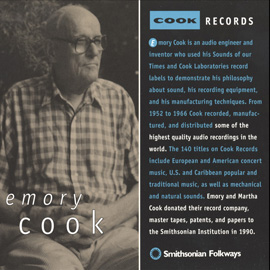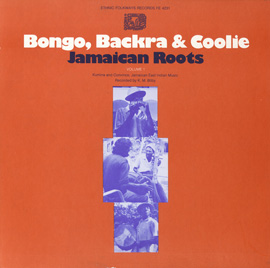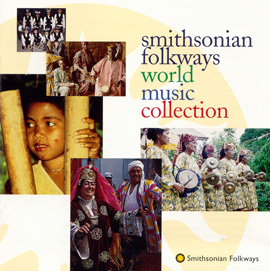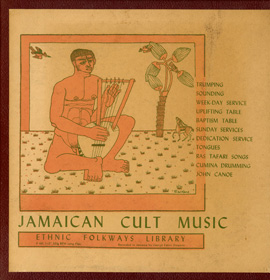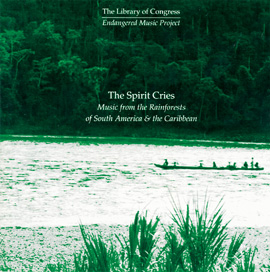Summary
This lesson is intended to develop knowledge about certain aspects of Jamaican music and culture. Students will experience glimpses of Jamaican culture through listening, performance, game play, and discussion.
Suggested Grade Levels: 3-5
Country: Jamaica
Region: Caribbean
Genre: World music
Instruments: Recorders, side drums, body percussion
Language: English
Co-curricular Areas: Social studies, dance
National Standards: 1, 2, 6, 7, 9
Prerequisites: Recorder skills
Objectives:
- Listening to music for “big” and “small” beats
- Identifying instrumentation aurally
- Understanding the colonial legacy in Jamaica through music
- Playing a children’s game
Material:
- “Quadrille Band: Quadrille 1st Figure” from Bongo, Backra & Coolie: Jamaican Roots, Vol. 2
- “Quadrille Band: Quadrille 4th Figure” from Bongo, Backra & Coolie: Jamaican Roots, Vol. 2
- “Fife and Drum: John Canoe Music” from Bongo, Backra & Coolie: Jamaican Roots, Vol. 2
- “Manuel Ground” from Children’s Jamaican Songs and Games
- Pictures of Jamaican instruments that will be heard in these recordings
- Pictures and maps of Jamaica and the surrounding Caribbean islands
- Pictures or video clips of traditional Jamaican dances
Lesson Segments:
- European Set Dances in Jamaica (National Standards 2, 6, 7, 9)
- Bringing to Life Jamaican Fife and Drum (National Standards 2, 6, 7, 9)
- Singing and Playing a Jamaican Folk Song and Game (National Standards 1, 2, 6)
Lesson 1: European Set Dances in Jamaica

“Quadrille Band: Quadrille 1st figure”
from Bongo, Backra & Coolie: Jamaican Roots, Vol. 2 (1975) | FW04232
“"Quadrille Band: Quadrille 4th figure"”
- Play the track “Quadrille Band: Quadrille 1st Figure.”
- Ask the students to tap the big (main) beats on their laps.
- Then get the students to tap the small beats (subdivisions) on their laps.
- Ask: Can the small beats can be played in groups of two or four (simple meter) or in groups of three or six (compound meter)? (Compound.)
- Play the track again asking the students to pay attention to the instrumentation.
- Ask: What instruments do you hear? (Guitar, banjo, fife.)
- Play the recording again and ask the students to imitate the guitar or banjo strum patterns by tapping them on their laps.
- Share this insight on the quadrille (also see liner notes):
- In the nineteenth century, the enslaved Africans in Jamaica learned to play European set dances on European instruments.
- The enslaved people played music for the Europeans but also for themselves.
- Eventually the music, although originally European, gained a “Jamaican flavor.”
- Play the track “Quadrille Band: Quadrille 4th Figure.”
- Based on the previous exercises, ask the students to identify the differences between this figure and the first figure. (This one is faster, in simple time, with more intense banjo strumming.)
- Play both tracks one after the other.
- Ask the students to move to each track in the way they think might be appropriate to European set dances in Jamaica.
- Which figure sounds less “European”?
Assessment:
- In small groups, students will be asked to come up with a dance that accurately portrays the rhythmic flavor of the first piece they listened to
- Then students will come up with a contrasting dance that fits more appropriately with the second piece they listened to
- Students should be able to explain their dance choices using music terminology from this lesson
Lesson 2: Bringing to Life Jamaican Fife and Drum

“Fife and Drum: John Canoe Music”
from Bongo, Backra & Coolie: Jamaican Roots, Vol. 2 (1975) | FW04232
- Play the track “Fife and Drum: John Canoe Music.”
- Have the children march in time with the music.
- Ask: What instruments do you hear? (Fife, snare/side drum, bass drum.)
- Teach (by memory) these two fife patterns on the recorder to some students.

- Have the students play each pattern four times before switching to the next pattern.
- Teach these drum rhythms to a few students. They should be played with sticks on any available snare and bass drums (marching drums would be preferable).

- Without playing the recording, have the students put their parts together one section at a time. Try to have them march around the room while playing these instruments.
- Give focus to the fife and drum traditions in Jamaica (see liner notes).
- Tell the students that fife and drum music in Jamaica is most closely associated with the John Canoe (Jonkanoo) masquerade festival.
- The festival usually happens around Christmas time.
- The music is related to the music of the British fife and drum corps heard during the period of English colonization in Jamaica.
Assessment:
- Check to see whether all students can accurately play the fife melodies on the recorder
- Check to see whether students can accurately play the rhythms of both the snare and bass drums while marching to the beat
Lesson 3: Singing and Playing a Jamaican Folk Song and Game
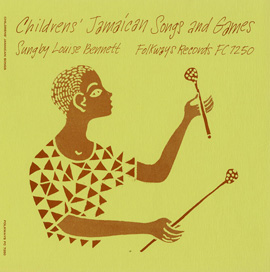
“Manuel Ground”
from Children's Jamaican Songs and Games (1957) | FW07250
- Have the children sit in a circle so that their knees are touching the knees of the persons on either side.
- Play the recording “Manuel Ground” (Emanuel Road).
- Have the children tap the beat on the floor in front of them.
- Get the children to sing the response “gal and boy” (girl and boy) along with the track.
- Place stones or bean bags in front of each student.
- Explain that they will be passing their stone with their right hand to the person to their right.
- Practice opportunity:
- Have each student pass their stone to the right and then collect the new stone in front of them. Practice this a few times by repeating the words “right, front, right, front” to a steady pulse. When you say “right,” they pass to the right; when you say “front,” they collect the stone in front of them.
- When they are comfortable passing the stones together, try to get them to pass to the beat of the song.
- Tell them to start passing when the singer gets to the part “bruk dem one by one.”
- They should sing the response “gal and boy” while playing the game.
- Try to learn the calls and sing with the children without the recording.
-
The bolded words correspond to the motion to the right while the underlined words correspond to the collection of the new stone.
Go down Emanuel Road, gal and boy fe go bruk rock stone (x2)
Bruk dem one by one (gal and boy)
Bruk dem two by two (gal and boy)
Bruk dem three by three (gal and boy)
Finger mash no cry (gal and boy)
’Member a play we dah play (gal and boy) - Increase the tempo until the game falls apart.

Assessment:
- Check to see whether students are able to pass the stones to the beat using a variety of different tempos
- Check to see whether they can accurately sing the song and pass the stones at the same time


